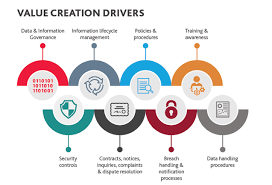Ensuring data privacy and security is crucial in analytics projects to protect sensitive information and maintain the trust of users and stakeholders. Here are some best practices for safeguarding data privacy and security in analytics projects:
- Data Minimization: Only collect and retain the minimum amount of data necessary for the analytics project. Avoid collecting personally identifiable information (PII) unless it is essential for the analysis.
- Anonymization and Pseudonymization: Anonymize or pseudonymize data whenever possible to remove or obfuscate personally identifiable information. This reduces the risk of re-identification and protects the privacy of individuals.
- Secure Data Storage: Implement secure storage mechanisms for data, including encryption at rest and in transit. Use strong encryption algorithms and ensure that access controls and authentication mechanisms are in place to protect data from unauthorized access.
- Access Control: Implement strict access controls to limit data access to authorized personnel only. Use role-based access control (RBAC) or attribute-based access control (ABAC) to ensure that individuals can only access the data they need for their specific roles.
- Data Masking: Implement data masking techniques to hide sensitive information in non-production environments. This ensures that sensitive data is not exposed during development, testing, or analysis.
- Data Handling Procedures: Establish clear procedures for handling and processing data, including guidelines for data transfers, sharing, and disposal. Train employees on proper data handling practices to minimize the risk of data breaches and unauthorized disclosures.
- Privacy Impact Assessments (PIA): Conduct Privacy Impact Assessments to identify and mitigate privacy risks associated with the analytics project. Evaluate the potential impact on individuals’ privacy rights and implement measures to address any identified risks.
- Compliance with Regulations: Ensure compliance with relevant data protection and privacy regulations, such as the General Data Protection Regulation (GDPR), California Consumer Privacy Act (CCPA), or industry-specific regulations. Understand the requirements and obligations imposed by these regulations and incorporate them into your analytics project.
- Data Transfer: When transferring data to external parties, ensure that appropriate data protection agreements and contracts are in place. Verify that the recipients have implemented adequate security measures and comply with applicable privacy regulations.
- Regular Audits and Monitoring: Conduct regular audits and monitoring to detect and respond to any security incidents or breaches promptly. Implement security monitoring and logging mechanisms to track data access and detect any suspicious activities.
- Data De-Identification: Where possible, de-identify data before performing analysis. This involves removing or altering direct identifiers and reducing the risk of re-identification. De-identified data poses lower privacy risks while still enabling valuable insights.
- Employee Awareness and Training: Educate employees about data privacy and security best practices. Ensure they understand their roles and responsibilities in protecting data privacy and train them on handling sensitive data appropriately.
- Data Privacy by Design: Incorporate data privacy considerations from the beginning of the analytics project. Implement privacy-enhancing technologies, assess privacy risks, and embed privacy controls into the design and architecture of the analytics solution.
- Regular Data Privacy Assessments: Conduct periodic assessments to evaluate and ensure ongoing compliance with data privacy and security requirements. Stay informed about evolving regulations and best practices to adapt your analytics projects accordingly.
By implementing these practices, organizations can prioritize data privacy and security in their analytics projects, mitigating the risks associated with sensitive data and maintaining the trust of users and stakeholders
SHARE
